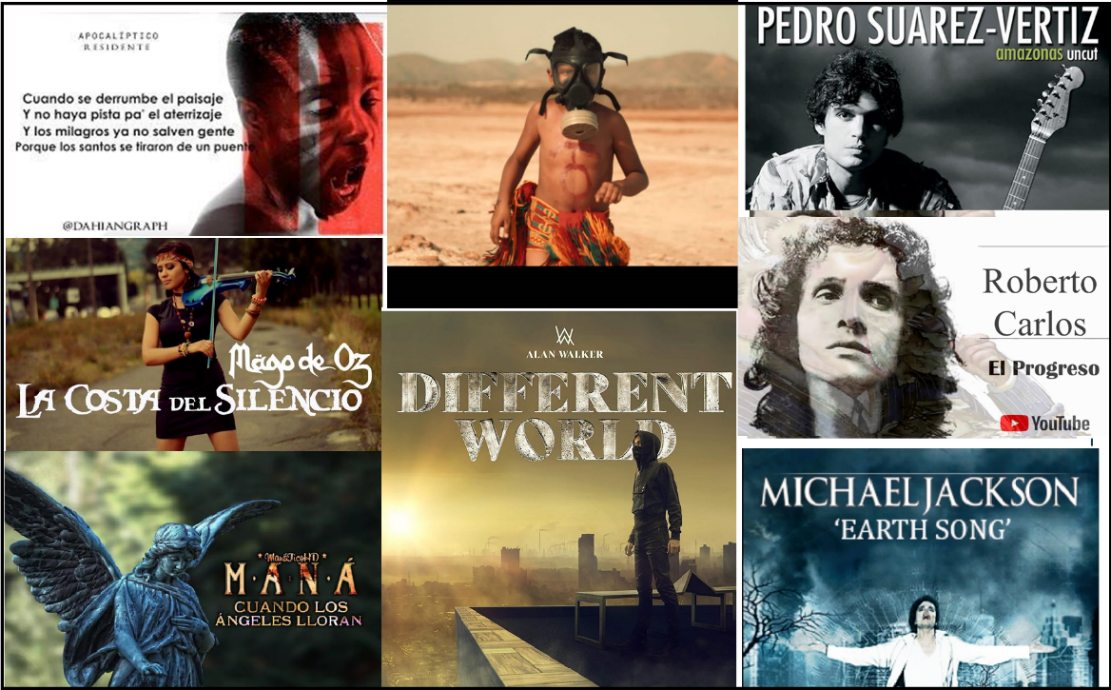Music is a powerful teaching tool to sensitize students to the reality of the environmental problems that we live.
Climate change effects and global pollution have had devastating consequences for the planet. Its deterioration has caused adverse effects on our economy and human health, jeopardizing the well-being of all. Therefore, educational institutions must become active entities working on behalf of the planet. With educational innovations, we can develop competencies in our students for research, problem-solving, creativity, empathy, and environmental awareness to face these problems.
Music is a powerful didactic tool to facilitate the acquisition of knowledge and various competencies in a dynamic and motivating environment. Beyond artistic expression, music helps the sonority of the world as part of the human essence (Díaz et al., 2014). Music is an instrument that can be used to elevate awareness of the reality of environmental problems.
“Through debate and reflection on music videos related to the deterioration of the environment, students generate greater environmental awareness and empathy, as well as develop their critical reasoning and strengthen their ethical commitment.”
Alluding to the words of the poet Hans Christian Anderson, “where words fail, music speaks,” at the Universidad Técnica Particular de Loja-Ecuador, we seek to instill environmentally sensitive values through music videos on impactful global platforms such as YouTube. To do this, we propose watching and analyzing music videos with environmental themes to generate empathy and awareness in students. Under this framework, the students who participated in our project were receptive to including multimedia musical elements as a learning resource for environmental scenarios.
Music videos and the environment
Video as an educational resource is a teaching tool that has led to improvements in experiences and learning outcomes in various areas of knowledge (Kinash et al., 2015). Many artists and musical groups worldwide, honoring their talent, have raised their voices of concern about environmental issues. We can mention Spanish and international artists such as: Maná “¿Dónde jugarán los niños? (Where will the children play?),” Mago de Oz “La costa del silencio (The cost of silence),” Amanda Miguel, Diego Verdaguer y Ana Victoria “Para mañana 2020 (For tomorrow 2020),” Michael Jackson “Earth Song,” and Alan Walker Different world. Their videos and songs reflect the concern and anguish they feel about our planet’s present and future environmental crises.
These music videos bring a powerful social language to respond to environmental problems, addressing values and building empathy in all fields of knowledge (Sanfeliu, 2010), especially environmental. They become a significant educational space that allows us to analyze our attitudes and behaviors towards the environment.
The use of music videos has motivated students and led them to reflect on different areas of knowledge (Gallardo and Jordi-Taltavull, 2019). Still, evidence of their use to promote environmental awareness is scarce; thus, it is a good scenario for experimentation on this subject.
Music videos for environmental awareness
Using music in the classroom makes an educational space to potentiate students’ cognitive skills to internalize patterns of discipline, systematization, and effort (De Franca, 2011). Also, for students whose objective is not musical learning, as in this project’s participants, music videos can get them out of their routines, be entertained, and experience new emotions in and out of the classroom.
To address this topic in class, we developed the following activities to generate empathy and ecological awareness in our university students through music videos:
-
Search and select music videos. The teacher performed a search for video clips with environmental themes that were covered in the class. Subsequently, a plenary session was held with the students, where several aspects contemplated in Step 3 were analyzed. As a team activity, the students also participated in the search and selection of other video clips that could be used for the topics covered in the class.
-
Analyze the videos. In class, we performed an analysis, asking the following questions: Have you heard the song before? What does the artist try to show with the video? Do the lyrics relate to environmental issues? What is the message of the song? Subsequently, each student wrote a short report about what it felt like to see the video and responded to the questions analyzed in the classroom from their criteria. The activity also provided additional detailed commentary on the song’s lyrics.
-
Measure student self-perception. To know the students’ perceptions of the music videos, we applied a survey in Google. The assessments of the various factors were positive (see Image 2).
Image 1 below shows the covers of the videos watched and analyzed.
Image 1. Some covers of videos watched and analyzed during the project.
Results
The music videos inspired the students with new perspectives on environmental problems, as affirmed by their positive evaluations of the different factors analyzed at the end of the project (Image 2). Most students mentioned that the videos led them to greater environmental awareness and empathy. They also considered videos to be an excellent didactic resource to address global environmental issues. They commented that they would be willing to recommend that other students watch the music videos.
Image 2. Students’ perception of different aspects of music videos.
The students’ perception of music videos analyzed in class (from left to right) was: Music videos address environmental problems (97%). Promote care of the environment (a lot, 85%). Generate environmental awareness (97.5%) and empathy (95%). You would recommend watching the videos (99%).
Additionally, most of the students responded that they had not seen the videos before and had not analyzed them from an environmental perspective. Some students even identified with various artists but did not know that some of their songs referred to nature or environmental problems, allowing them to reflect that all people, from any instance, situation, or profession, can do something in favor of the environment. (#CadenaDeAcciones). Also, most students participating in the project would be willing to join a group, club, or environmental organization.
Reflection
Using these music videos in class helps students feel an attachment to the environment from the teacher’s perspective. It also promotes a more dynamic environment in a class by generating debate and reflection on both local and global environmental situations. Additionally, students develop the capacity for analysis and synthesis, ethical commitment, and critical reasoning, which are necessary competencies to be developed in their academic training.
Finally, YouTube being the second largest search engine globally and the third most visited site after Google and Facebook makes it an excellent platform for teachers in all areas of knowledge who wish to foster environmental awareness in students through music videos. We can carry out projects that generate good environmental attitudes and contribute to environmental preservation and stopping its deterioration from the schools and universities.
About the authors
José Miguel Romero Saritama (jmromero@utpl.edu.ec) is a research professor at the Universidad Técnica Particular de Loja-Ecuador. He holds a Ph.D. in management and management of plant genetic resources. He is also a professor of Environmental Management and Biochemistry and Pharmacy. He obtained a bachelor’s in innovation and creativity for education and is the coordinator of several educational innovation projects in the classroom.
Rosa Janneth Simaluiza (rjsimaluiza1@utpl.edu.ec) is a research professor at the Universidad Técnica Particular de Loja-Ecuador. She holds a master’s in Microbiology and Parasitology: Research and Development. She has participated in several innovative educational projects in the classroom.
References
Alpert, F., Hodkinson, C. (2018). Video use in lecture classes: current practices, student perceptions, and preferences. Emerald insight. 62(1), 31-45.
Díaz, M., Morales Bopp, R., & Díaz Gamba, W. (2014). La música como recurso pedagógico en la edad preescolar. Infancias Imágenes, 13(1), 102–108. https://doi.org/10.14483/16579089.5455
De Franca, J. L. (2011). La música, una disciplina que cambia vidas. España. Editorial de la Universidad de Granada. Facultad de Ciencias de la Educación, departamento de Didáctica y Organización Escolar. Pp. 341
Gallardo, M., & Josrdi-Taltavull, M. (2019). Videoclips musicales en YouTube como herramienta para el aprendizaje. Ejemplo práctico en la enseñanza universitaria. Revista Interuniversitaria de Investigación en Tecnología Educativa (RIITE). 6, 64-75
Kinash, S., Knight, D. & McLean, M. (2015), “Does digital scholarship through online lectures affect student learning?”, Journal of Educational Technology & Society, 18 (2), 129-139.
Sanfeliu, A. (2010). La música y el medio ambiente. Escola de Cultura de pau. Institut Catalá Internacional.
Edited by Rubí Román (rubi.roman@tec.mx) – Observatory of Educational Innovation.
Translation by Daniel Wetta.
This article from Observatory of the Institute for the Future of Education may be shared under the terms of the license CC BY-NC-SA 4.0 
)
)



)